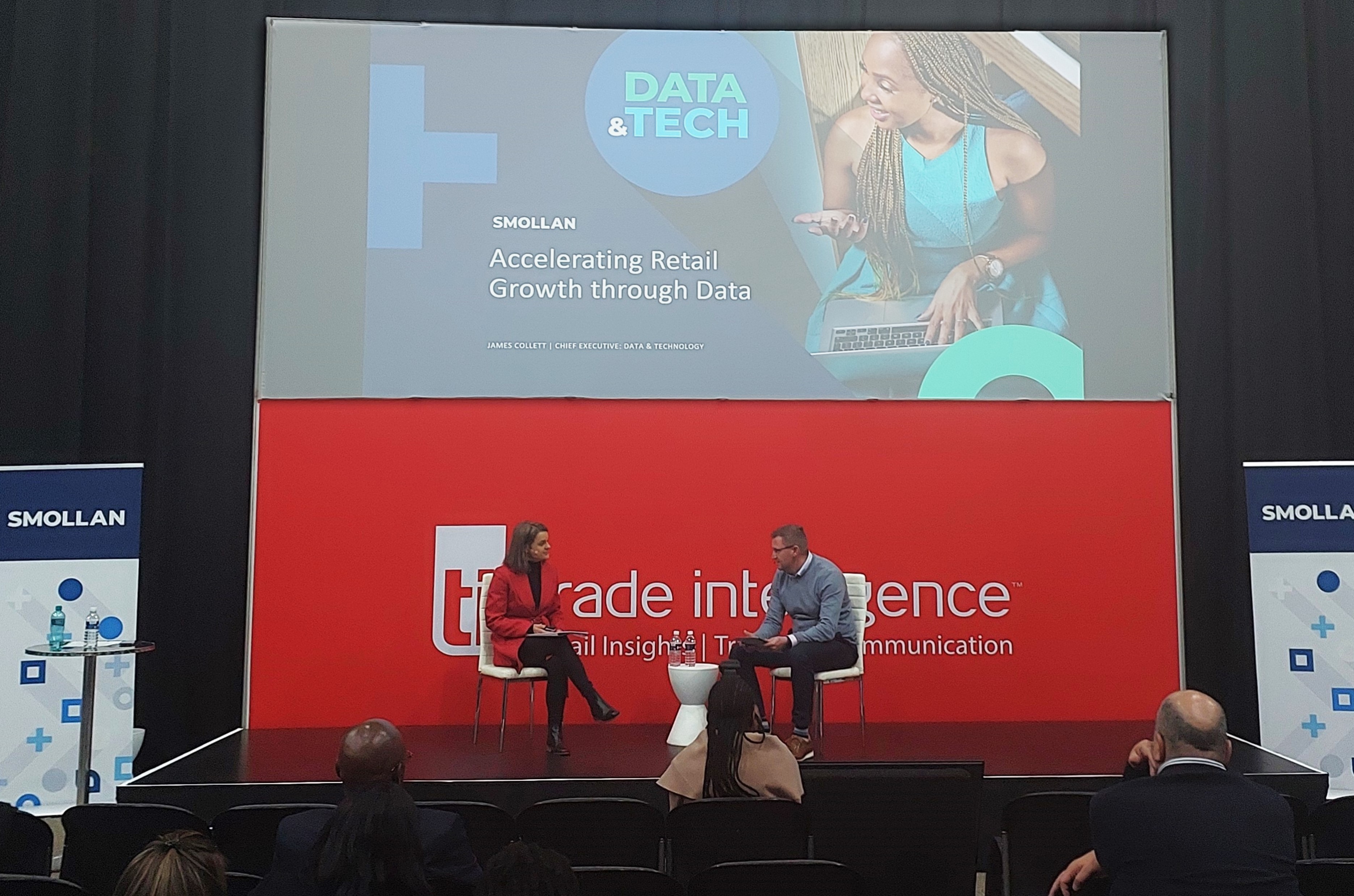| At the recent Trade Intelligence Retail Conference, Smollan’s James Collett, Chief Executive of Data & Technology, had some interesting thoughts to share on growth through data, and why local retailers are struggling to get on board. |  |
Q: With access to so much data, why are some retail players struggling to enable growth through data?
A: The reality is while access to data is crucial, effectively utilising it for growth involves various challenges. Some retail players might struggle due to issues such as inadequate data quality, lack of proper analytics tools, organisational silos, or difficulty translating data insights into actions. Successful growth through data requires a cohesive strategy, skilled personnel, and a culture and environment that understands and values data-driven decision making.
Q: By data-driven decision making, are you referring to artificial intelligence (AI)?
A: Partially. The current wave of advances in artificial intelligence doesn’t actually bring us decision making, but instead a critical component of decision making which is prediction.
Prediction is the process of filling in missing information. Prediction takes data you have and uses it to generate data you don’t have. Much discussion about AI emphasises the variety of prediction techniques such as classification, clustering, regression, decision trees, neural networks, deep learning, and so on. These techniques are important for data scientists interested in implementing AI for a particular prediction problem. Prediction is a central input into decision making, but it is not the only aspect of decision making.
Q: If prediction is only part of the decision-making process, what are the other components?
A: Decisions have six other key elements:
- When someone, or something, makes a decision, they take input data from the world that enables a prediction
- That prediction is possible because training occurred about relationships between different types of data and which data is most closely associated with a situation
- Combining the prediction with judgement on what matters…
- … the decision maker can then choose an action
- The action leads to an outcome, which has an associated reward or payoff. The outcome is a consequence of the decision. It is needed to provide a complete picture
- The outcome may also provide feedback to help improve the next prediction
Q: When you say someone, or something, do you mean that humans follow the same process when making a decision?
A: Yes, we do. Because we make decisions every day, all the time, we are very often not aware of the process or the components to the decision we are making. We do it intuitively, very often without thinking too much, but in the background the process we are following is the same.
Q: So how is the decision-making process impacted when you introduce machine prediction or AI?
A: When humans are handling all the components of a decision, they are very often not aware of those components or the process they are following. This is true even when making complex decisions which require a lot of thinking.
If we want to introduce machines to our decision making, it is critical to be able to break down the decision into elements. By breaking down a decision into its components we can understand the impact of prediction machines on the value of humans and other assets. Prediction machines are so valuable because they can often produce better, faster, and cheaper predictions than humans can. As machine prediction increasingly replaces the predictions that humans make, the value of human prediction will decline.
Q: So, we are saying that humans are going to be making less predictions in the future. What is the impact on their role in the other elements of decision making?
A: The other elements of a decision— data collection, judgment and action—remain, for the most part and for now, firmly in the realm of humans. They are complements to prediction, meaning as prediction becomes cheaper, they increase in value.
Q: What do you mean by the other components “increase in value”?
A: As machine prediction becomes cheaper, we can apply it to decisions we were previously not able or willing to make because the prediction competent was too costly.
Because prediction machines now offer better, faster, and cheaper predictions, we may be more willing to exert effort into many more decisions where we previously had opted not to decide. Because of this, the demand for and value of the other components of the decision, such as the human skills associated with data collection, judgment and actions, will increase.
Q: Can you provide us with a real-world example of what you are explaining here?
A: Let’s look at how cheaper prediction has changed the world for cab drivers. In the case of cabbies, they would have invested many years to learning how to predict the fastest route from one location to another at a particular time of day. None became worse at their job because of prediction machines. Rather, many other drivers became a lot better at choosing the best route by using prediction machines. The cabbies’ prediction skills were no longer a scarce commodity. Drivers who weren’t cabbies had driving skills and human sensors (eyes and ears) that were effectively enhanced by prediction machines, enabling them to compete.
Q: Let’s bring this back to retail organisations. What are the biggest stumbling blocks to implementing data-driven decision making to drive growth?
A: No doubt the biggest challenge to data-driven decision making in organisations are people and culture. There is often a lot of fear that machines are going to replace humans as decision makers. That fear is born out of people and organisations not having a clear understanding of how the decision-making process works. As we have discussed, machines will replace humans in the prediction component of decision making, but rather than making humans less valuable, as many people often expect will happen, the opposite is true. The human components of decision making, such as judgement and action, will become most valuable. As cheap prediction enables organisations to make more and more decisions, more human judgement will be required, which will result very often in more human action.
Implementing this effectively in organisations will require humans and machines to work together more than ever and that will require change. This is not something that can be done by a small team of geeks in a dark corner of the organisation. As you know, most people are not great fans of change and so employees’ resistance to change is often the biggest stumbling blocks to adopting data-driven decision making.
Q: Is there anything else organisations should be thinking about?
A: I think it is very important for organisations to really understand that great data-driven decision making requires lots of great quality data. Earlier I mentioned that data and data collection were still human components of the decision-making process. People may have thought this a bit strange as surely technology or machines are responsible for the data in an organisation.
The reality is, while technology manages the data, humans manage the technology. In most organisations there are still significant challenges with:
- Outdated legacy systems that may not support advanced analytics or integration with newer data sources
- Poor data quality, inconsistent formats, and difficulties integrating data from various sources can lead to inaccurate insights and hinder decision making
- Organisational silos resulting in data spread across different departments and teams without proper collaboration can limit the holistic view needed for effective decision making
These are all critical to implementing data-driven decision making and are things that can only be fixed by humans.
About Trade Intelligence
Trade Intelligence (Ti) is a leading source of consumer goods retail research, insights and capability-building solutions that enable effective and profitable trading relationships and inform future-fit strategies.
Our expertise covers the FMCG environment, the major retail and wholesale players as well as emerging retail and shopper trends.
Founded in South Africa in 2004, Ti is branching out into other developing African markets with the intention of bringing global insight to local in-country manufacturers, retailers and service providers.

